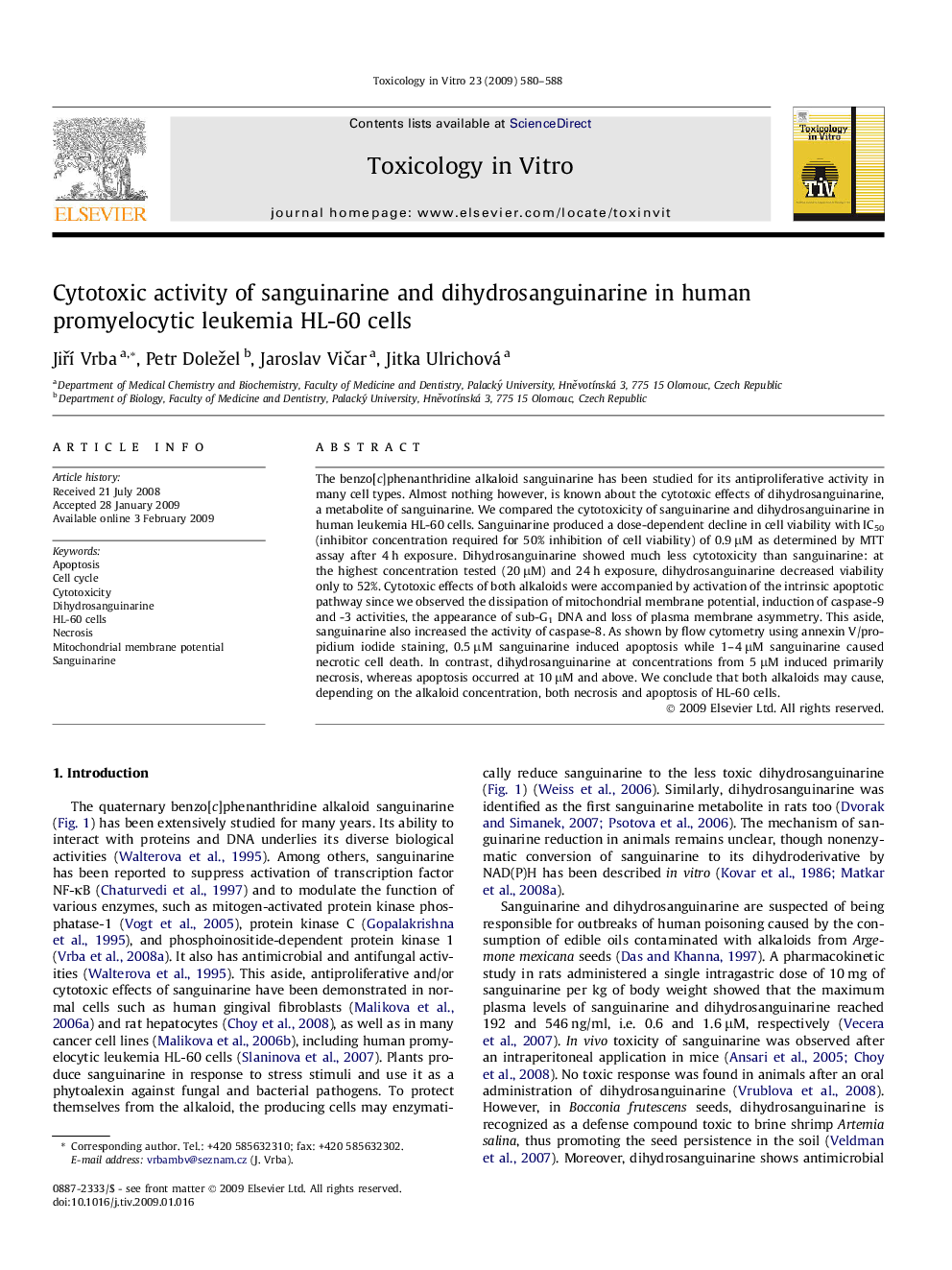| کد مقاله | کد نشریه | سال انتشار | مقاله انگلیسی | نسخه تمام متن |
|---|---|---|---|---|
| 2602781 | 1133798 | 2009 | 9 صفحه PDF | دانلود رایگان |

The benzo[c]phenanthridine alkaloid sanguinarine has been studied for its antiproliferative activity in many cell types. Almost nothing however, is known about the cytotoxic effects of dihydrosanguinarine, a metabolite of sanguinarine. We compared the cytotoxicity of sanguinarine and dihydrosanguinarine in human leukemia HL-60 cells. Sanguinarine produced a dose-dependent decline in cell viability with IC50 (inhibitor concentration required for 50% inhibition of cell viability) of 0.9 μM as determined by MTT assay after 4 h exposure. Dihydrosanguinarine showed much less cytotoxicity than sanguinarine: at the highest concentration tested (20 μM) and 24 h exposure, dihydrosanguinarine decreased viability only to 52%. Cytotoxic effects of both alkaloids were accompanied by activation of the intrinsic apoptotic pathway since we observed the dissipation of mitochondrial membrane potential, induction of caspase-9 and -3 activities, the appearance of sub-G1 DNA and loss of plasma membrane asymmetry. This aside, sanguinarine also increased the activity of caspase-8. As shown by flow cytometry using annexin V/propidium iodide staining, 0.5 μM sanguinarine induced apoptosis while 1–4 μM sanguinarine caused necrotic cell death. In contrast, dihydrosanguinarine at concentrations from 5 μM induced primarily necrosis, whereas apoptosis occurred at 10 μM and above. We conclude that both alkaloids may cause, depending on the alkaloid concentration, both necrosis and apoptosis of HL-60 cells.
Journal: Toxicology in Vitro - Volume 23, Issue 4, June 2009, Pages 580–588